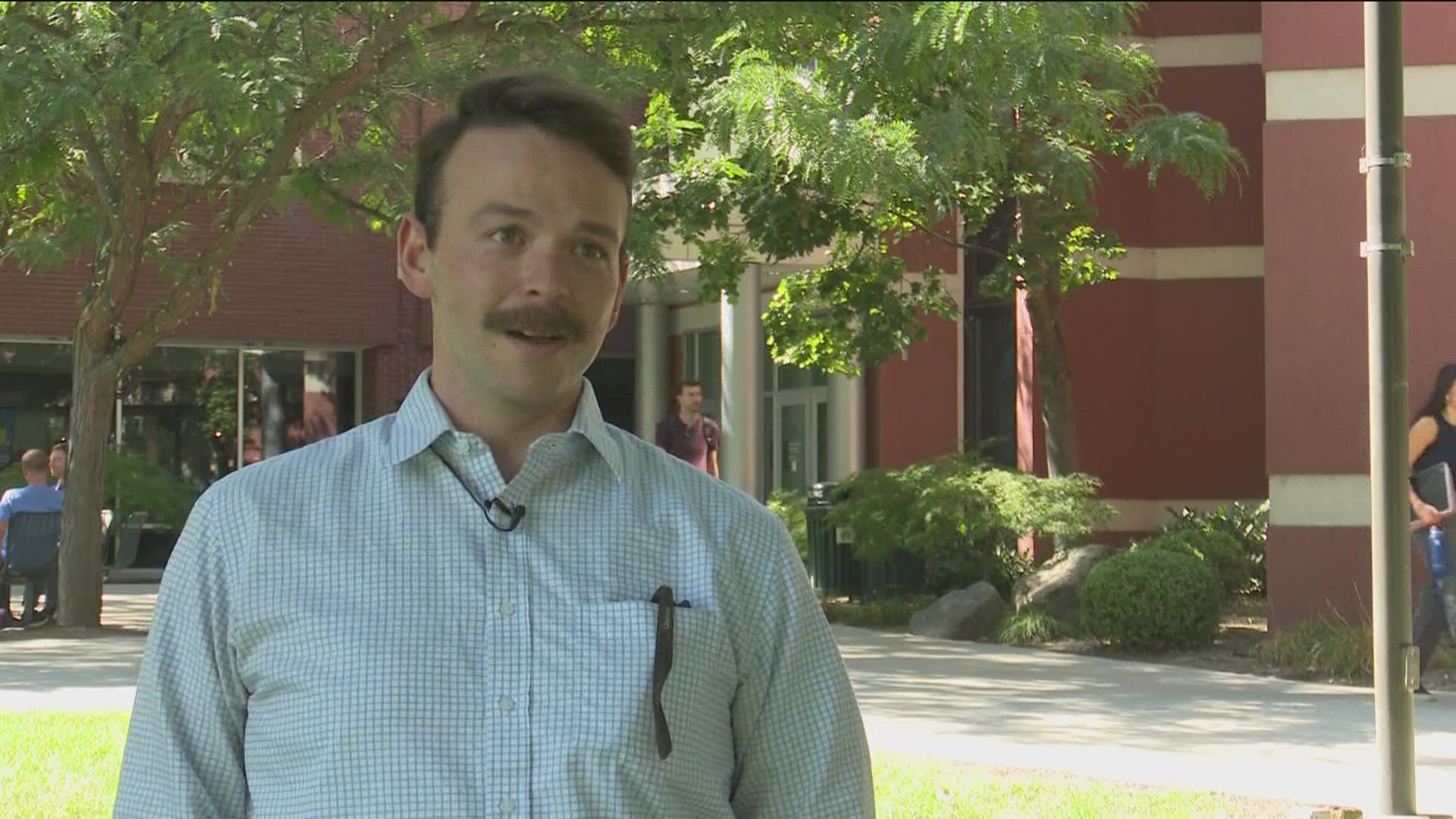IDAHO, USA — President Joe Biden on Wednesday announced his plan to forgive up to $20,000 per borrower of federal student loans as part of the Biden-Harris Administration’s Student Debt Relief Plan.
Pell Grant recipients could see up to $20,000 of debt cancelled. Non-Pell Grant recipients can receive up to $10,000 of their loan cancelled, too.
To qualify, individual income must be less than $125,000 annually, or the household income must be less than $250,000, according to the Biden Administration.
The total student loan debt in the United States is nearly $1.75 trillion, according to numbers from Federal Reserve.
"It's obviously out of control. It's been a big discussion for a long time and doesn't show any signs of getting better," Boise State University doctoral student Brian Stelbotsky said.
Stelbotsky earned his undergraduate degree in 2009 from the University of Pittsburgh. He's still paying off that loan today, but Stelbotsky says his loan is manageable.
"I'm not going to complain about havening some of that relieved, of course," Stelbotsky said.
It's a big help to the individual - such as Stelbotsky, but this plan will have consequences, according to University of Idaho Clinical Associate Professor of Economics, Steven Peterson.
The deficit doesn’t disappear; it is added to the federal debt total. Early estimates suggest this will cost $300 billion.
"I have very mixed feelings," Peterson said. "At some point, if the debt gets high enough, it could ultimately threaten the stability of the economic system in the United States. We're no where near that, but we've seen countries where that has occurred, such as Greece."
After adjusting for inflation, Peterson paid $1,000 per semester in the late 1970's. He understands the current financial burden students are under to afford college. However, Peterson believes loan cancellation could send the wrong message to future borrowers.
People may begin to take out federal student loans they cannot repay, because they expect the loan to be forgiven at some point in the future.
"If the incentives don't line up right, you can actually make the student loan debt worse in the long run," Peterson said.
Peterson favors bankruptcy. He believes that is the most tailored system to evaluate borrowers on a case-by-case basis.
"On a complex policy like this, it would be nice to come up with a bi-partisan solution," Peterson said. "Congress, many years ago, made it very difficult to file bankruptcy on student loan debt. I would like to see that revisited. That way the court can go through and vet the finances of a family and make sure that it's appropriate to discharge that kind of debt."
Peterson feels the Biden Administration’s plan is a one-size-fits-all policy that could award relief to those who otherwise wouldn’t need it - people who are otherwise fully capable to pay off student loans on their own.
"There's always unintended consequences," Peterson said. "People will feel that's a misuse of tax dollars."
However, from Stelbotsky's perspective, this relief is needed because he knows people in far worse situations, stuck living under crippling debt.
"I think if we've gotten ourselves into a situation where there's a level of student debt nationally that we're concerned about, then there have to be some discussions how we got there," Stelbotsky said. "How we might change the systems or structures that got us there in the first place."
The Biden-Harris Administration’s Student Debt Relief Plan has ongoing changes for loan repayment that will current and future borrowers.
Join 'The 208' conversation:
- Text us at (208) 321-5614
- E-mail us at the208@ktvb.com
- Join our The 208 Facebook group: https://www.facebook.com/groups/the208KTVB/
- Follow us on Twitter: @the208KTVB or tweet #the208 and #SoIdaho
- Follow us on Instagram: @the208KTVB
- Bookmark our landing page: /the-208
- Still reading this list? We're on YouTube, too:

